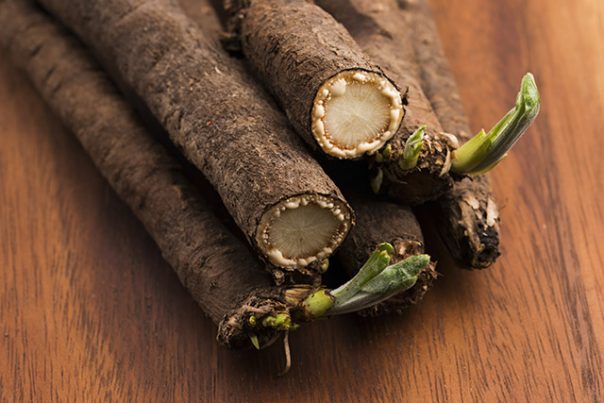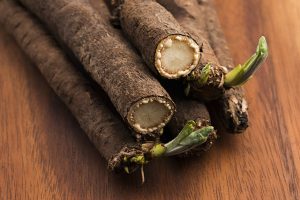
Scorzonera – sources, health benefits, nutrients, uses and constituents at NaturalPedia.com
Friday, August 18, 2017 by Frances Bloomfield
http://www.naturalpedia.com/scorzonera-sources-health-benefits-nutrients-uses-and-constituents-at-naturalpedia-com.html

Scorzonera, also known as black salsify or Spanish salsify, is a perennial plant cultivated as a root vegetable. Despite its name, it is closely related to the salsify genus but isn’t a member. These days, scorzonera is a popular ingredient in the cuisines of Italy, Belgium, and France. In Mediterranean countries, however, scorzonera root is known for both its culinary and medicinal value.

List of known nutrients
Scorzonera is know to contain a wide plethora of vitamins and minerals in varying amounts. These include:
- Calcium
- Copper
- Dietary Fiber
- Inulin
- Iron
- Magnesium
- Manganese
- Phosphorous
- Potassium
- Vitamin A
- Vitamin B1 (Thiamin)
- Vitamin B2 (Riboflavin)
- Vitamin B5 (Pantothenic acid)
- Vitamin B6 (Pyridoxine)
- Vitamin B9 (Folate)
- Vitamin C
- Vitamin E
In addition to being loaded with essential nutrients, scorzonera is composed mostly of water and is therefore relatively low in calories. According to HealWithFood.org, a 100-gram serving of scorzonera provides as little as 73 calories.
Medicinal uses for scorzonera
This plant contains manganese, calcium, iron, copper, phosphorus, magnesium, and potassium, all of which are minerals that can slow down the onset of osteoporosis. The bone formation and mineralization process is further aided by vitamin C.
Scorzonera has high amounts of potassium, meaning it can regulate blood pressure when consumed frequently. Potassium is a vasodilator or a substance that relaxes the blood vessels and keeps blood flow regular, inhibiting the formation of blood clots and lowering the chances of developing high blood pressure.
The iron and copper content of scorzonera is such that frequent consumption can inhibit hair fall. Uncooked scorzonera can deliver one-fifth of the daily recommended intake of both iron and copper, the two of which keep the hair healthy and prevent premature hair graying.
Scorzonera has a Glycemic Index (GI) score of 10 and is therefore quite low on the GI scale. This makes scorzonera an ideal food for diabetic patients since it has little effect on blood sugar levels.
Body systems supported by scorzonera
Scorzonera can maintain a healthy digestive system by supplying the body with vitamin B1 and inulin. Vitamin B1 or thiamine promotes protein metabolism and assists in the production of hydrochloric acid, making it essential to older individuals since hydrochloric acid levels decrease with age. Inulin, meanwhile, is a prebiotic fiber linked to increased bifidobacteria growth. Bifidobacteria are bacteria that protect the large intestines from other, harmful bacteria, as well as minimize the risk of constipation.
More than just keeping the digestive system healthy, vitamin B1 is crucial to the central nervous system.
Scorzonera has vitamins A and C, both of which are antioxidant vitamins that are necessary for a functional and efficient immune system.
Ways to use scorzonera
All parts of scorzonera can be eaten. The name “black oyster plant” is due to scorzonera having a mild oyster-like taste.
Alina Alina of SnapGuide.com created a simple scorzonera recipe that only needs four other ingredients besides scorzonera. With some butter, herbs, black pepper, and sea salt, one can enjoy scorzonera fry with a bit of toast. Alina Alina suggested roasting scorzonera instead of frying it to use in a soup or mash.
Though not too common outside of Europe, and only just recently trending in the United States, scorzonera can be grown in one’s own backyard. As per GardeningKnowHow.com, the basic requirements of this plant are fine-textured, well-drained, and uniformly moist soil with a soil pH of six or higher. Nitrogen-based fertilizer will help scorzonera grow during mid-summer.
Where to learn more
Summary
Scorzonera has the nutrients necessary for a strong digestive and central nervous system.
Moreover, it can reduce the chances of ailments like osteoporosis and high blood pressure, as well as reduce hairfall.
The low GI number means that diabetic patients can eat scorzonera with little issue.
Sources include:
DailySuperfoodLove.com
HealWithFood.com
LiveALittleLonger.com
SnapGuide.com
GardeningKnowHow.com
Tagged Under: Tags: Scorzonera





